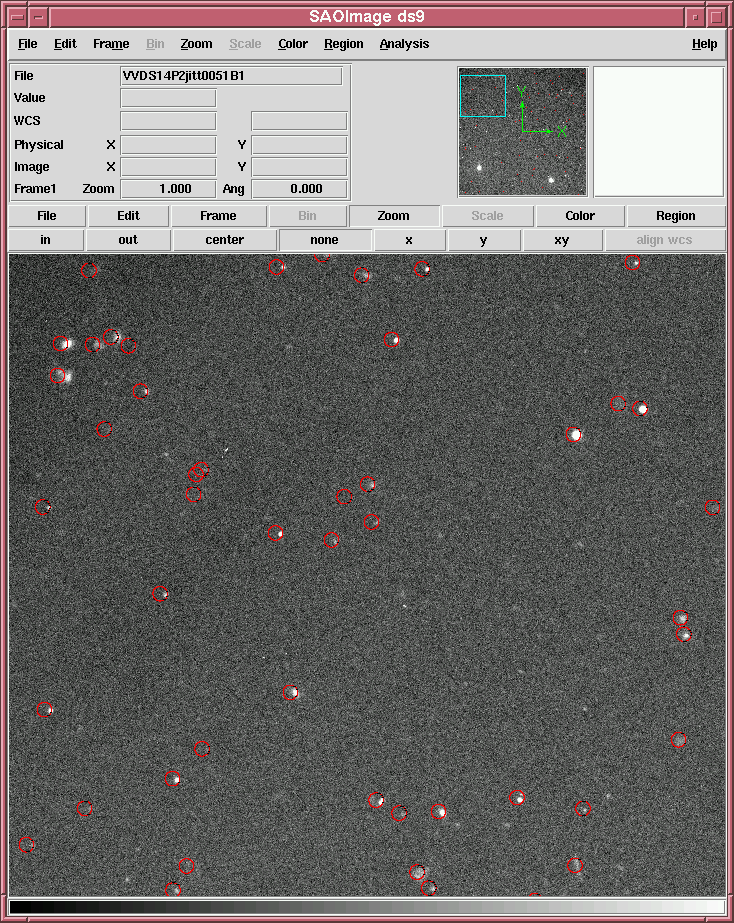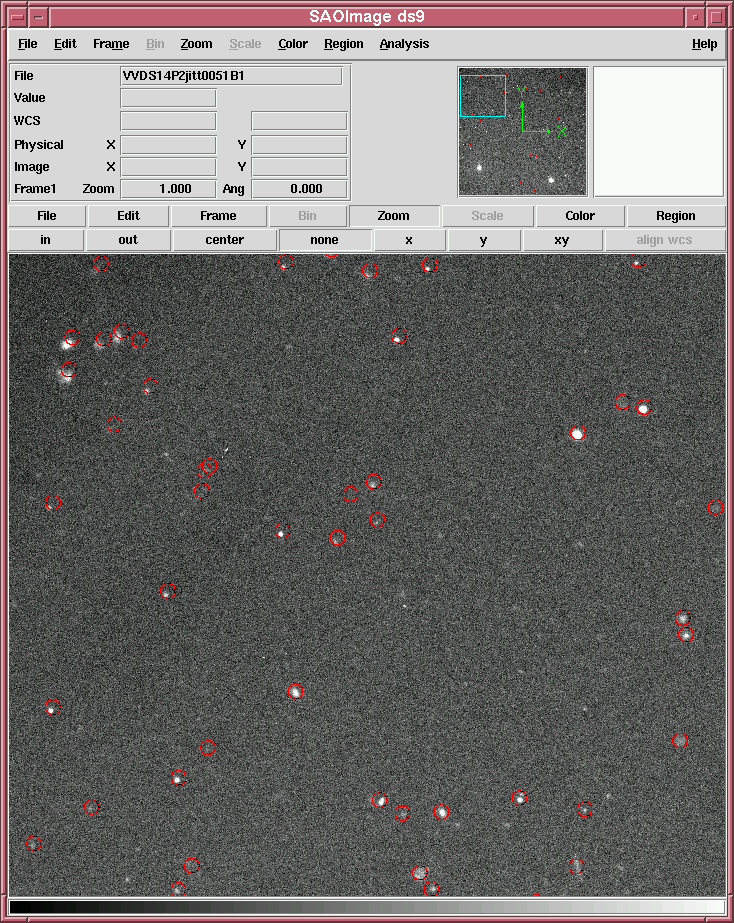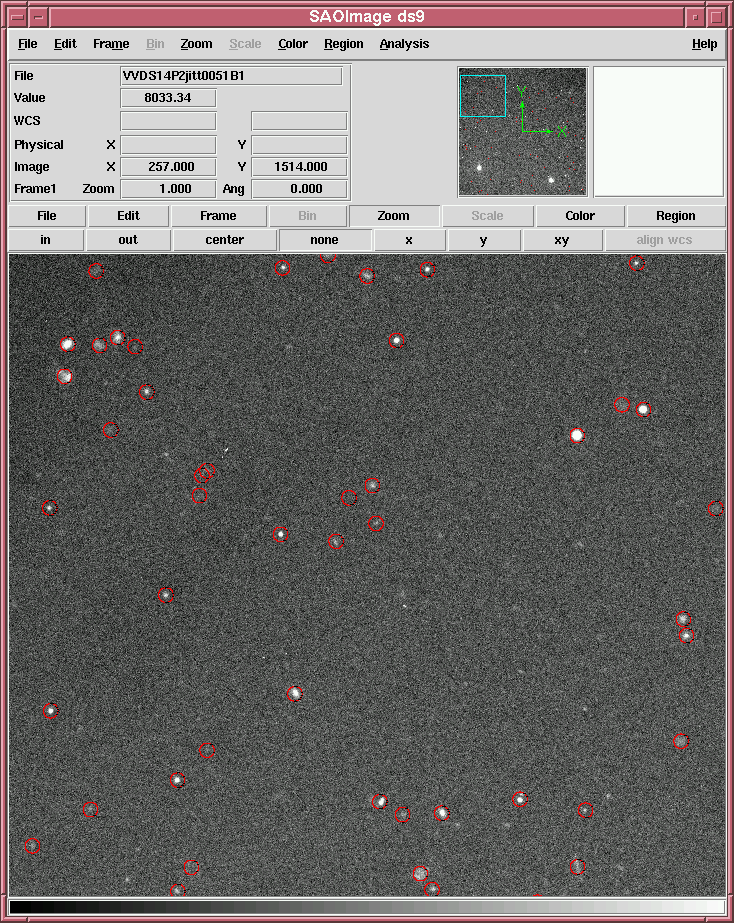
Executive summary: The positions
of the targets from the VVDS catalog are overlaid on VIMOS image from the
first commissioning run. Depending on how the VIMOS image is registered,
the results are of varying quality:
|
| Motivation: The VVDS catalogs are generated from CFH12K data. The individual images are stacked to form large mosaiced images. Galaxy catalogs are generated from these mosaics. The catalogs have a nominal astrometric accuracy of 0.3 arcseconds. However it is possible larger astrometric errors exist in some regions. Particularly at the joins between images of the original images, shears may exist. Hence, if the spectroscopic masks are designed under the assumption that the catalog astrometry is perfect and only VIMOS distortion need to be accounted for, there is a possibility that targets may not end up in their slits. |
| The screen grab at
left shows the a section some of the pre-imaging data taken during
the first commissioning run. A linear WCS as computed for the field by
comparing with the USNO catalog. The WCS in the image header was not used.
Using this WCS, the targets in the F14 catalog were plotted on the image.
Their positions are shown as red 3''
circles. There are a number of objects not centred in their circles. Note
that a simple shift will not correct this. Some objects are well centred,
some are not.
|
 |
| There are of course
distortions in the VLT focal plane which cannot be corrected with
a linear WCS. Therefore a 2nd order plate solution was computed using the
USNO stars in the field. This should correct for the distortion.
The situation is marginally better, but
still sub-optimal. There are still several sources not in circles.
|
 |
| If, instead of fitting the WCS of the VIMOS image to the USNO catalog, one fits to the F14 catalog instead of the USNO catalog, the situation is much better. The sources are almost all centred. |  |
These results can be quantified. For every
target in all the VIMOS images of the F14 field, the position determined
from the VVDS catalog was compared to the position on the VIMOS frames:
The RMS offsets for the three methods is shown below.
|
Discussion:There are two possible conclusions:
|
Send comments/suggestions/problems
to
Stephen.Gwyn@astrsp-mrs.fr